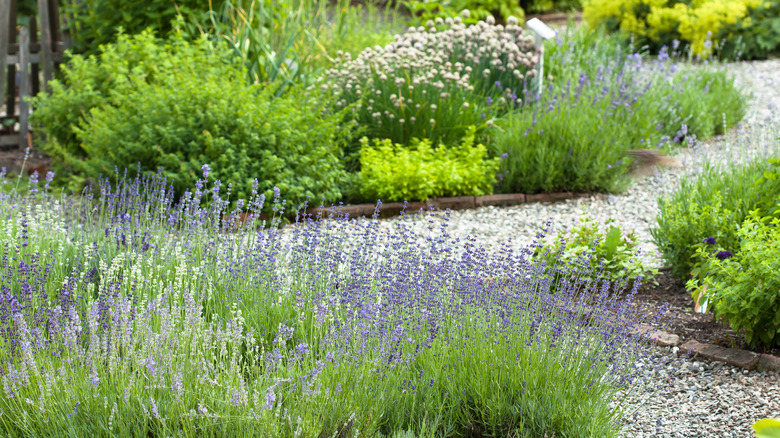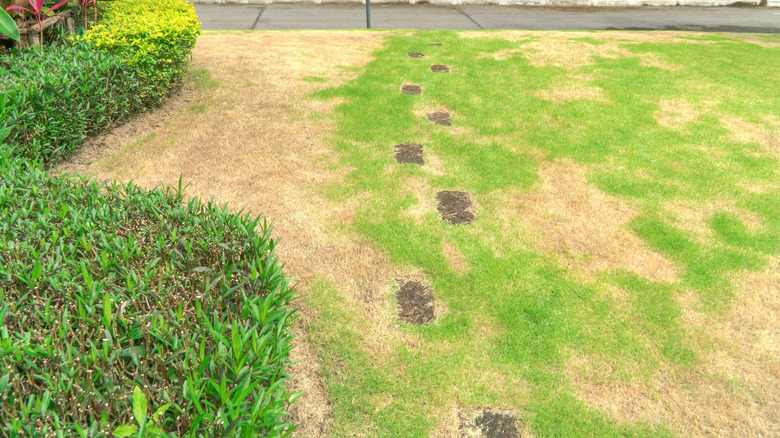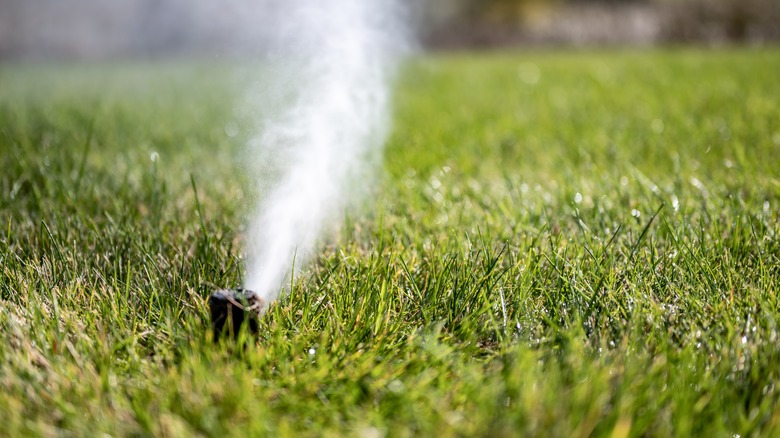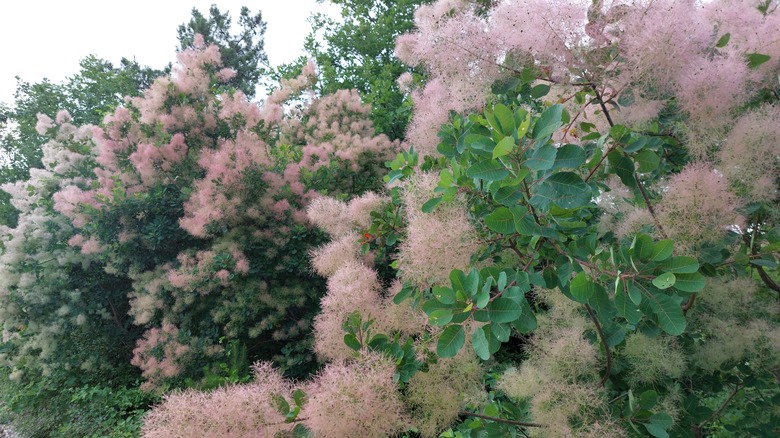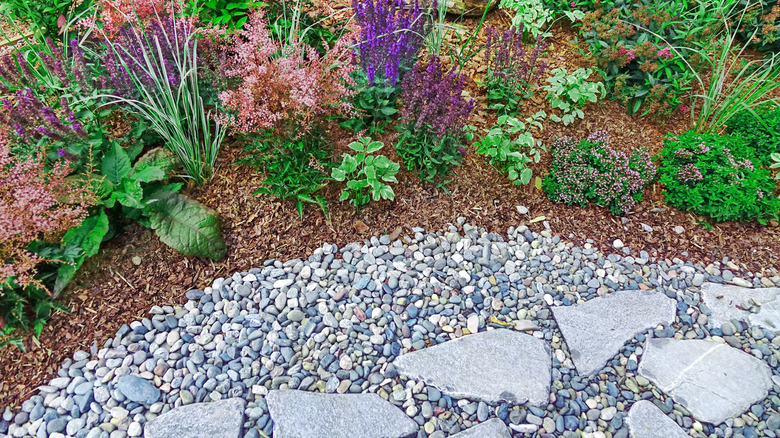How To Implement A Dry Garden In Your Outdoor Space
Keeping the average American lawn, garden, and landscaped area alive takes about 12 gallons of water per square foot per year. That may not sound like a lot, but when you consider that a standard quarter-acre lot is 10,890 square feet, that's an average of over 130,000 gallons a year — which is why dry gardens are so important. So while you can help do your part by installing water-efficient plumbing indoors, you can make an even more significant impact by changing how you look at your outdoor space.
With nationwide drought conditions on the rise and vital sources of water like the Great Salt Lake drying up, it's never been more important to be cognizant of the amount of water we use unnecessarily. And yes, lovers of perfect green lawns: In some areas, that means considering switching at least a portion of your green space into a dry garden. Don't worry, though. Dry gardens are not full of gravel and sadness. By selecting the right plants, you can have a beautiful, dynamic space in your lawn that you do not have to irrigate.
Soil conditions
Is there an area of your lawn that you struggle to keep green? A space that seems to require more water than the rest? This is an excellent spot to install a dry garden. Look for soil conditions that may be extra rocky. These spaces allow water to flow through quickly, so they are typically unsuitable for most landscaping plants and grasses that require consistent moisture to thrive. Sandy soil conditions are similar; rainwater and irrigation flow to the lower levels, leaving the top dry rather than holding water like clay soils.
Another consideration is elevation. If you have an area of your lawn that is slightly higher or slopes down, water will tend to run off and pool in lower-lying areas. While this may seem like a problem since the upper areas are dry and lower levels too wet, it's actually an opportunity to install a dry garden at the top and a rain garden at the bottom — a stunning combination.
Sunlight
Although dry gardens can be installed anywhere the soil conditions are right, a spot with access to full sun at least 8 hours a day is ideal. These sunny spots are where the most evaporation occurs and where it is the most difficult to keep landscape plants and turf grasses alive. If you are trying to keep your full-sun plants alive using sprinklers, you are wasting money and resources. Up to 50% of the water that comes out of a sprinkler is lost, in large part to evaporation.
If you think about how much money you spend on your water bill irrigating your greenspace, you might as well set that money on fire for all the good it's doing you. The more sunlight the irrigated area gets, the more you lose to evaporation. Instead of watching your hard-earned income evaporate, convert some or all of your full-sun areas to a dry garden.
Drought tolerant plants
Now that you know where to install a dry garden, you'll need to select the right plants. As you plan your space, focus on native plants which are naturally adapted to your climate and adept at surviving drought conditions. When you think of dry climates, you might think you are limited to some ornamental grasses and boring woody shrubs, but this is far from the truth. There are many beautiful blooms that continue to thrive in dry conditions.
The key lies in combining colors, textures, and sizes for interest. Smoke bushes (Cotinus coggygria) offer height and amazing texture with their smoke-like puffs of pink or purple leaves. Yucca plants also add structure with clean lines if that's more your style. Blooming aromatic herbs like lavender and rosemary are also surprisingly drought-tolerant. Depending on your USDA Hardiness Zone, perennials like catmint (Nepeta cataria) and lantana come back every year to add color to your dry garden. While you wait for your bushes and perennials to grow into their new space, you can fill empty spots with reseeding annuals like blackeyed Susans (Rudbeckia hirta) and cornflowers (Centaurea cyanus).
Add paths
To maintain your dry garden — like adding mulch, weeding, or pruning — you will need room to walk. Your paths may be as simple as a few stepping stones, or if you have a large dry garden, you may need wide enough paths for a cart or wheelbarrow. Wood mulch is an inexpensive option upfront, but you will need to add more each year to keep weeds suppressed and your dry garden looking nice. Not only does using wood mulch add to the yearly cost of upkeep, but it also requires extra time and energy for maintenance.
Gravel is an ideal material for dry garden paths. If you are concerned about weeds, place a layer of fabric weed barrier on the ground before adding gravel. Although it initially costs more than wood mulch, gravel does not decompose, so you only have to add it once. These pathways are also excellent for suppressing weeds, so you can spend more time enjoying your garden and less time working on it.
